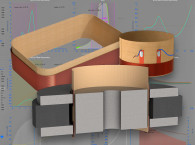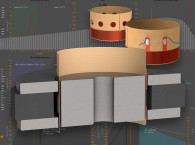This month audioXpress showcases art and craft in audio design. You’ll find both as you read about handcrafted power cables, updated bookshelf speakers, high-performance ultra-compact drivers, and more.
A few good things came out of the disco era—including a custom-made speaker cable that addressed sound-quality issues arising from cables running near discotheque strobe lights. Ray Kimber devised that handbraided cable, inspiring Kimber Kable company and its handcrafted audio and video cables (p. 27).
Ron Tipton explains how he updated a pair of MTX Audio Monitor 5i 5.25? bookshelf speakers to use with a new computer (p. 15).
You can best test a newly designed loudspeaker by comparing its sound to what you hear through high-quality headphones. Top-notch amplifiers drive such headphones. George Ntanavaras describes how he built a high-power headphone amplifier (p. 20).
Nine years ago RCF, a global player in pro audio loudspeakers, renewed its commitment to product research, development, and manufacturing in Italy. It has launched many new products since. Vance Dickason tested one—the ultra-compact ND950 1.4 neodymium compression driver and its complementary HF950 injection molded composite horn (p. 34).
If you’re a hobbyist who is considering swapping out rectifier tubes in your audio equipment, you should take a few precautions. Find out what they are in Richard Honeycutt’s article comparing solid- and hollow-state rectifier tubes (p. 30).
Which is better for heating tube amplifiers? Alternating or direct current? It’s an ongoing debate. Gerhard Haas examines the data and concludes that despite the prevalence of AC, DC offers clear advantages for indirectly heating vacuum tubes (p. 12).
Regards,
Mary Wilson
editor@audioxpress.com





